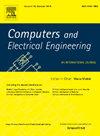Ironmaking process modeling uncertainty quantification via conformal prediction based on random vector functional link networks
IF 4
3区 计算机科学
Q1 COMPUTER SCIENCE, HARDWARE & ARCHITECTURE
引用次数: 0
Abstract
For real-world industrial system modeling, dynamic stochastic errors inevitably exist in data-driven deterministic predictions (i.e., point predictions). The uncertainty of such prediction results directly affects various prediction-based operations for work condition identification and production decision-making. Therefore, a novel interval prediction method quantifying multi-output uncertainty is proposed by combining conformal prediction with random vector functional link networks (RVFLNs), which has fast learning speed and high accuracy performance. The proposed algorithm is used for the reliable prediction of molten iron quality in blast furnace ironmaking process. Firstly, to address the issue that shallow learning models have limited expression capabilities to describe complex nonlinear relationships, the dynamic attention mechanism and semi-supervised autoencoder are utilized to reveal and represent the correlations between different input variables and multi-output variables. Subsequently, the Elastic Net regularization technique is adopted to improve the multicollinearity and overfitting problems of traditional RVFLNs. Further, considering the deterioration of prediction accuracy and credibility caused by uncertain system dynamics, an Empirical Copula function-based Copula prediction uncertainty quantification method is introduced to realize multi-output variables reliable prediction with a given confidence level. Finally, actual blast furnace industrial data is applied to demonstrate the validity, utility, and sophistication of model.
求助全文
约1分钟内获得全文
求助全文
来源期刊

Computers & Electrical Engineering
工程技术-工程:电子与电气
CiteScore
9.20
自引率
7.00%
发文量
661
审稿时长
47 days
期刊介绍:
The impact of computers has nowhere been more revolutionary than in electrical engineering. The design, analysis, and operation of electrical and electronic systems are now dominated by computers, a transformation that has been motivated by the natural ease of interface between computers and electrical systems, and the promise of spectacular improvements in speed and efficiency.
Published since 1973, Computers & Electrical Engineering provides rapid publication of topical research into the integration of computer technology and computational techniques with electrical and electronic systems. The journal publishes papers featuring novel implementations of computers and computational techniques in areas like signal and image processing, high-performance computing, parallel processing, and communications. Special attention will be paid to papers describing innovative architectures, algorithms, and software tools.
 求助内容:
求助内容: 应助结果提醒方式:
应助结果提醒方式:


